13 Amazing Benefits Of Triphala, How To Use, And Side Effects
Learn how these three fruits can work wonders for your body and keep you healthy.
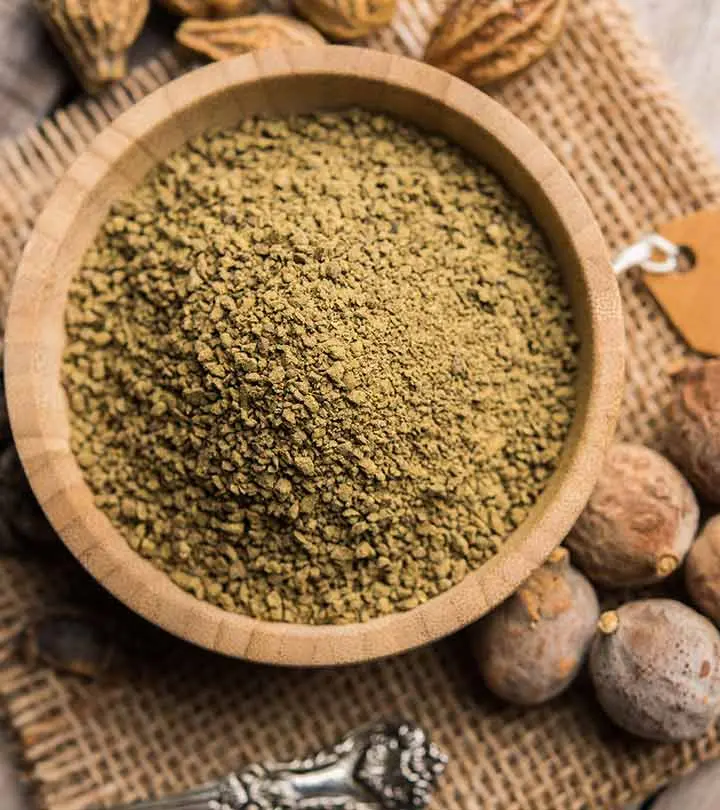
Image: Shutterstock
Triphala is an ancient natural remedy better known for its many nutritional benefits. This Ayurvedic medicine is native to India and is a mixture of three fruits (1).
Triphala churna’s benefits can be attributed to its anti-inflammatory and antioxidant properties that are useful to help treat many ailments (2). It has laxative and antibacterial properties too that help improve dental health, treat type 2 diabetes, enhance skin health, and stimulate hair growth.
In this article, we have included a holistic overview of the potential health benefits and types of Triphala, how to use it, its recommended dosage, how to make it at home, and the possible side effects.
Keep reading.
 Know Your Ingredient: Triphala
Know Your Ingredient: TriphalaWhat Is It?
A mixture of three fruits (bibhitaki, amalaki, and haritaki) in their dried and powdered form.
What Are Its Benefits?
It may treat Type 2 diabetes, aid weight loss, reduce stress and anxiety, boost immune health, and improve hair and skin health.
Who Can Use It?
It is safe for al except lactating or pregnant women.
How Often?
You can consume it daily but in moderation.
Caution
Excess consumption may lower blood sugar levels too much.
In This Article
What Is Triphala?
Triphala is the amalgamation of two Sanskrit words – Tri, which means three, and Phala, which means fruit. This means Triphala is the mixture of three fruits in their dried and powdered form. Those include bibhitaki, amalaki, and haritaki.
As per Ayurveda, each fruit in Triphala is thought to positively impact the body’s three doshas – vata, pitta, and kapha. These doshas are believed to permeate body, mind, and spirit. It is believed in herbalism that the ingredients in Triphala can heal and balance these doshas to improve your health and wellness.
Triphala is composed of the following three fruits:
- Embilica officinalis, commonly known as amla or Indian gooseberry. This edible fruit has a sour taste and is often used to add flavor dishes (3).
These berries are rich in vitamins and minerals that can treat certain ailments such as inflammation, thyroid, cancer, neurological disorders, and osteoporosis (4).
- Terminalia bellirica is commonly referred to as bibhitaki or vibhidaka. It is best known for its anti-inflammatory and antioxidant properties (5).
As per Ayurveda, it is used to treat bacterial and viral infections. It contains flavones, tannins, and gallic acid that have immense medicinal values. Bibhitaki is used to regulate blood sugar levels and for weight management (6), (7).
- Terminalia chebula is also known as haritaki and harad. Haritaki is a popular remedy for intestinal and digestive issues such as constipation (8). It possesses antioxidant properties and is packed with phytochemicals.
Triphala is a mix of these three fruits that are dried and mixed in the right proportions. While the three are used separately for various treatments, together they make quite a potent treatment for a number of health problems (9).
 Trivia
TriviaThere are three types of Triphala that are commonly used. Find out more about them in the next section.
Key Takeaways
- Triphala may help protect the body from cancer and inflammation-causing free radicals.
- Its daily consumption may promote digestive health and bowel movement.
- Triphala boosts immunity against infections and diseases.
- It improves blood circulation and regulates blood sugar, which may help manage diabetes and obesity.
Different Types of Triphala
As per Ayurveda, Triphala is of three types:
- Swalpa Triphala: Swalpa Triphala is also known as Maha Triphala. It consists of three fruits – draksha, parushaka, and kharjura (10).
- Madhura Triphala: Madhura Triphala is also known as Swadu Triphala. It consists of kharjura, kasmarya, and draksha. It is claimed to promote the desire for food and improve vision. It is also useful in alleviating irregular fever (10).
- Sugandhi Triphala: Sugandhi Triphala is a mix of lavangam, jatiphalam, and ela. It acts as an astringent and is useful in dealing with constipation problems caused by vata and kapha doshas (10).
 Trivia
TriviaNow that you know the different types of Triphala, let’s check out its health benefits in the following section!
Health Benefits Of Triphala

1. May Protect Against Dental Disease And Cavities
The anti-inflammatory and antimicrobial properties of Triphala may help prevent dental problems such as plaque formation, gingivitis, fungal infections, and sores. A study conducted in Iran found that a mouthwash consisting of Triphala reduces microbial growth, dental plaque formation, and gingival inflammation (11), (12).
Another study conducted on hospitalized patients with periodontal diseasei It refers to the inflammation of gums caused by a bacterial infection, which may affect the bones surrounding the teeth. showed that treatment with a Triphala-based mouthwash reduces plaque and gum inflammation without any side effects (13).
A study in India has found that Triphala helps stop the growth of certain fungal species in the mouth (14).
2. May Improve Mental Clarity
Triphala is believed to boost memory and cognitive function. Its antioxidant properties aid in lowering oxidative stress in the brain, which may promote improved concentration and mental clarity (15), (16). In addition, Triphala’s ability to balance stress levels and promote sound sleep can lead to better mental focus and concentration.
3. May Helps To Treat Type 2 Diabetes
Triphala possesses hypoglycemic properties. This makes the intake of insulin by the cells easier and reduces the to take insulin in the form of shots. A study conducted on 150 people with diabetes found that Triphala reduces blood glucose levels (17).
Another study published in the International Journal of Ayurvedic Medicine states that Triphala may improve glucose homeostasisi It refers to steady blood glucose levels achieved by a balanced interaction of the hormones glucagon and insulin. by alleviating oxidative stress (18). The amla in Triphala also has some antidiabetic properties that may help in preventing and treating diabetes (19).
4. May Improves Skin Health
Triphala has a protective effect on dermal fibroblasts and keratinocytes. This means it may help rebuild the dermis layer and aid recovery from injury. It may also prevent darkening, skin damage, and aging (20).
Its anti-inflammatory and antioxidant properties may help heal certain skin ailments. A study conducted by SGT University (India) found that Triphala may help increase collagen formation and have an antibacterial effect, which may aid wound healing (21). Triphala is also rich in flavonoids and antioxidants that may delay aging (22).
- May Rejuvenate Skin
This herbal powder is claimed to moisturize, smoothen, and soften your skin, and also help in rejuvenation. This is attributed to the antioxidant compounds present in Triphala that clear pigmentation and help kill the acne-causing bacteria. This characteristic, along with its emollient property, make Triphala ideal for soothing dry and flaky skin. However, limited research is available to support this claim.
- May Reduce Dark Circles
Using Triphala water as an eyewash is said to be one of the best ways to get rid of puffy eyes and under-eye dark circles. Add a small amount of Triphala powder in water and wash your eyes thoroughly with it. It is said to refresh your eyes and reduce puffiness. Though there is insufficient scientific evidence available to support this claim, it is backed by tons of anecdotal evidence.
5. May Stimulate Hair Growth And Treat Dandruff

The emollient properties of Triphala lock moisture in the hair and prevent alopecia. Mix Triphala and water and drink it like a tonic or apply it topically to help stimulate hair growth (10). As Triphala possesses antifungal properties, it may help in treating dandruff. However, more research is required to prove this claim. To use Triphala to reduce dandruff, just mix two tablespoons of Triphala powder in 4-5 tablespoons of water and massage the paste gently on the scalp. Wash it off after 20-30 minutes.
6. Aids Weight Loss
Triphala can be consumed as a supplement for weight loss as it controls the satiety center by inducing the secretion of cholecystokinin (a hormone that is released by your body to indicate that you are full) (23). A study conducted on mice on a high-fat diet found that Triphala and its constituents act as anti-obesity agents and reduce body weight (24).
The antioxidant property and hydroxyl and nitric oxide radicals present in Triphala help in reducing body weight and body mass index (BMI) (25). Those interested in using triphala for weight loss should start with small doses and consult a healthcare professional for best advice.
7. Reduces Stomach Ulcers
Triphala exhibits an ulcer ameliorative effect on gastric ulcers by strengthening the gastric mucosa and restoring the free radical-scavenging enzymes in the intestine (26).
8. Improves Digestive Health
Triphala works effectively as an alternative to a laxative and can be used to stimulate bowel movements
(29). It can also reduce intestinal inflammation (30). People with digestive problems or bowel movement issues can have one spoon of Triphala before going to bed to make sure their colon remains healthy. You can also take a spoon early in the morning on an empty stomach with loads of water to bid farewell to bloating, upset stomach, and diarrhea.
To get rid of constipation, have a glass full of warm water with 2 teaspoons of Triphala powder every night. Make sure you don’t eat anything after having it. However, you may have water after half an hour. Sunil Sikri, a YouTuber, shared his remedy for relieving constipation in one of his vlogs. He mixes liquid triphala with warm water, flaxseed powder, and psyllium husk to facilitate regular bowel movements. He says, “Very simple formula which I use and has proved very effective for me (i).”
9. May Protect Against Certain Cancers
Triphala contains antioxidants that may possess cancer-fighting properties (29). These antioxidants may act against certain types of cancers such as lung, liver, skin, and breast (30).
Animal studies have exhibited the cytotoxic effect of Triphala. A substantial regression in tumor cells has been seen in mice that were fed Triphala (31). In vivo studies have proved that Triphala is effective in inhibiting pancreatic tumor growth (32).
However, more research is required to understand the cancer-fighting property of Triphala on humans.
10. May Provide Relief From Arthritis And Gout
Triphala exhibits anti-inflammatory properties that have the potential to provide relief from joint pain, arthritis, and gout (33), (34). It provides nutrients that help strengthen your bones and flush out the excess uric acid that is responsible for inflammation. Triphala has also been found to reduce cartilage and bone degradation in arthritic rats (1).
11. May Help Reduce Stress and Anxiety
Triphala possesses de-stressing properties, which may help in treating stress- and anxiety-related disorders. Triphala has been found to prevent noise-induced metabolic changes in rats by mediating immune responses to reduce stress levels (1). However, more research is required to understand this effect of Triphala on humans.
12. May Boost Immune Health

Triphala is rich in vitamin C that may help in improving your immune system (35). It also aids in the cleansing and detoxification of your digestive and gastric tract, which may help improve your digestion as well as immunity (27).
13. May Improve Eye Health
Triphala is a potent eye tonic that can keep your eyes healthy and vision sharp. It also possesses some anticataract properties (37). You may consume Triphala orally or use it as an eyewash to get rid of any eye infections.
Triphala eye drops can help in reducing the symptoms of “computer vision syndrome” like dry and irritated eyes, excessive secretion of tears, and light or glare sensitivity (37).
You can soak about 1-2 spoons of Triphala powder in warm water overnight. In the morning, strain the soaked mixture and use it to clean your eyes.
This simple remedy can keep your eyes healthy and infection-free.
 Quick Tip
Quick Tip14. May Help Manage Piles
Triphala possesses natural anti-inflammatory, wound-healing, and mild laxative properties that may help manage piles. It also helps soften stool, ease bowel movements, and reduce the strain during defecation – all of which are crucial for managing and preventing piles (38).
Triphala’s antioxidants also promote colon health and possibly prevent hemorrhoidal inflammation (39). It also helps strengthen the walls of blood vessels, including those around the rectum, to reduce the risk of bleeding associated with piles.
You can consume Triphala in powdered form, as a decoction by mixing 1-2 teaspoons of the powder in warm water, or as a supplement. Ideally, consume it before bedtime.
Now that you know all about the health benefits of Triphala, let’s check out how you can use it.
How To Use Triphala
Triphala is available in different forms, including capsules, tablets, powder (tea and face packs), and liquid (eyewashes).
- Triphala Capsules And Tablets: Triphala tablets or capsules are the better options for people who can’t take this herbal preparation in the form of powder. However, ensure that you do not consume it in excess amounts.
- Triphala Tea: Triphala can be consumed in the form of tea. Add a teaspoon of Triphala to a cup of water and boil it. For taste, add honey. It is safe to consume this tea two to three times a day. However, excess intake may lead to some side effects.
- Triphala Eyewash: Triphala is beneficial in maintaining your eye health. Make Triphala eyewash by mixing a teaspoon in a glass of water and letting it soak overnight. Use this water as an eyewash in the morning for better results.
- Triphala Face Pack: Triphala may help in improving skin health. You can mix a tablespoon of Triphala powder with some coconut oil and apply it to your face. Leave this pack on for 10 to 15 minutes, then rinse it off with warm water. In case you experience an allergic reaction after applying it, consult a doctor immediately.
- Triphala With Lemon And Honey: You can mix lemon and honey with Triphala and consume it. However, take Triphala with warm water and without any additives to reap the maximum benefits. You can also mix Triphala with milk or ghee. Consume this solution on an empty stomach or before meals for maximum absorption. Some people prefer consuming Triphala with warm water before going to bed. You can discuss your options with your doctor before starting this treatment.
- General Wellbeing: Triphala can also be taken as a decoction for people who want to stick to a traditional method for general wellbeing. Just add a teaspoon of triphala powder to a boil in water, then steep it for ten minutes. Drink it warm after straining it for maximum effects.
Here’s how much Triphala you are recommended to take…
Dosage
The recommended dose of Triphala ranges from 500 mg to 1 gram per day.
Here’s how you can make Triphala Churna at home.
How To Make Triphala Powder At Home
Just buy these ingredients and make your dose of health in the confines of your home.
What You Need
Before buying the ingredients, keep in mind that they need to be in the ratio 1:2:4 (Harad:Baheda:Amla). Decide your quantities accordingly. Here we have taken 20 g of harad.
- Harad – 20 g
- Baheda – 40 g
- Amla – 80 g
- Mortar and pestle
What You Need To Do
- Grind all the raw ingredients into a fine powder with the help of a mortar and pestle.
- Filter the powder individually and pour them in individual stone bowls.
- Now, mix these powders in the ratio of 1:2:4.
Transfer the new mixture into a jar and store it for future use.
Though Triphala is generally safe for consumption, it does have a few side effects that you need to keep in mind. Check them out in the next section.
Potential Side Effects And Risks Of Triphala

It’s important to be aware of the side effects of triphala churna. This herbal medicine may cause some harmful effects when consumed in high doses. It may lower blood sugar levels too much, interfere with certain medications, and lead to harmful effects in pregnant women.
1. May Lower Blood Sugar Too Much
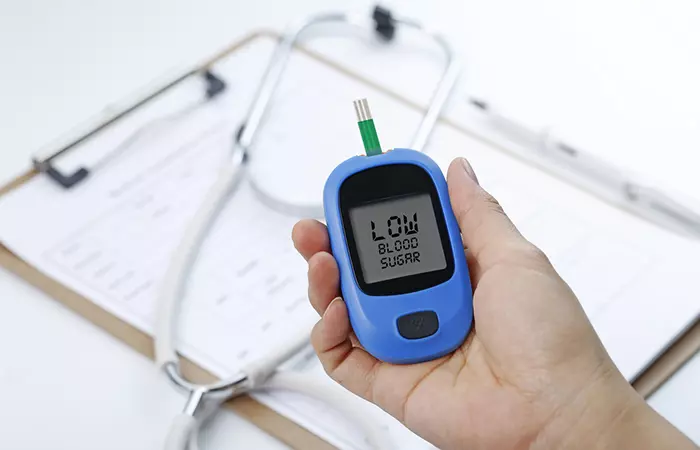
Triphala can interact with diabetes medication and cause a drop in your blood sugar levels. Menthol and sorbitol, two active ingredients of Triphala, are responsible for this action (17).
Though there is no direct research stating that Triphala lowers blood sugar levels, it is a possibility as it has antidiabetic properties. Therefore, consult your doctor before taking Triphala if you have diabetes.
2. May Interfere With Certain Drugs
Triphala was found to inhibit the activity of cytochrome P450, a family of enzymes found in liver cells (40).
In one study, a patient given a herbal mixture containing Triphala experienced two relapses of depression. Symptoms like sleep disturbances, low mood, and reduced energy followed. These symptoms improved once the patient stopped taking the herbal medication (41).
It is unclear which medications Triphala interferes with. Hence, if you are on any medication, please consult your doctor before taking Triphala.
3. May Cause Pregnancy Complications
One report states the potentially harmful effects of Terminalia chebula, an active ingredient in Triphala, during pregnancy. This ingredient is said to cause abortion of the fetus. It could also cause heartburn, constipation, nausea, and diarrhea in pregnant women (42). However, there is not much research currently available to establish this.
Anecdotal evidence also suggests that Triphala may not be suitable for kids. More research is being done on the possible adverse effects of Triphala on children.
Note: It is important to speak to a healthcare professional before beginning Triphala, particularly if you are on medication or have underlying medical issues. This reduces the risk of adverse reactions and ensures safe usage.
Infographic: Triphala Supplements
Triphala is a staple in traditional Ayurvedic medicine. However, this ancient herbal remedy is better known for the nutrition it provides. From preventing dental problems to improving eye health, it has many health benefits. Click on the infographic below to learn the different ways in which you can consume or utilize Triphala.
Some thing wrong with infographic shortcode. please verify shortcode syntax
Triphala is an herbal concoction that has been used in traditional Ayurvedic medicine for its medicinal value. The high antioxidant and polyphenolic content is responsible for many benefits of Triphala. It is a combination of three plants and exhibits anti-inflammatory, anti-bacterial, and laxative properties. Triphala churna’s uses may protect against dental diseases and cavities, help treat type 2 diabetes, improve skin health, stimulate hair growth, and treat dandruff. However, excess consumption may cause hypotensioni It is the medical term for low blood pressure levels (a reading below 90/60 mmHg) and may cause dizziness. , interfere with certain drugs, and cause pregnancy complications. Hence, use it in the recommended dosage and consult your doctor or consult herbalist in any emergencies.
Frequently Asked Questions
Where can one get Triphala Churna?
The best thing about Ayurvedic medicine is that it can be made easier with a few simple ingredients that are easily available in your kitchen or in the market. One can get the three fruits, dry them in the sun properly, grind them, and mix them at home for the best results.
However, for those who have no time to make it, it is also easily available in the market and online. So, simply buy and use it!
What brands are good for Triphala tablets and churna?
If you are looking for pure and genuine products, I would suggest you go for famous yet easily available brands such as Dabur, Organic India, and Himalaya.
Does Triphala affect the kidneys?
Triphala has a protective effect on kidney function. As per research, it can help reduce oxidative stress and prevent kidney damage (43).
Can Triphala cure fatty liver?
Triphala can help manage the symptoms and facilitate the healing of non-alcoholic fatty liver that is caused by obesity (44).
Is Triphala acidic or alkaline?
Each of the three ingredients in Triphala are alkaline in nature.
Discover the power of Triphala! Click on the video below to figure out how this ancient herbal remedy can help you unlock your inner strength and improve your general health.
Personal Experience: Source
StyleCraze's articles are interwoven with authentic personal narratives that provide depth and resonance to our content. Below are the sources of the personal accounts referenced in this article.
i. How I relieved constipation by Triphala, flaxseed, isabgolhttps://www.youtube.com/watch?v=H8PXuyeyfPQ
References
Articles on StyleCraze are backed by verified information from peer-reviewed and academic research papers, reputed organizations, research institutions, and medical associations to ensure accuracy and relevance. Read our editorial policy to learn more.
- Therapeutic Uses of Triphala in Ayurvedic Medicine, Journal of Alternative and Complementary Medicine, US National Library of Medicine, National Institutes of Health.
https://www.ncbi.nlm.nih.gov/pmc/articles/PMC5567597/ - Scientific validation of the ethnomedicinal properties of the Ayurvedic drug Triphala: a review, Chinese Journal of Integrative Medicine, US National Library of Medicine, National Institutes of Health.
https://pubmed.ncbi.nlm.nih.gov/23239004/ - Amla (Emblica officinalis Gaertn), a wonder berry in the treatment and prevention of cancer, European Journal of Cancer Prevention, US National Library of Medicine, National Institute of Health.
https://pubmed.ncbi.nlm.nih.gov/21317655/ - Emblica officinalis (Amla): A review for its phytochemistry, ethnomedicinal uses and medicinal potentials with respect to molecular mechanisms, Pharmacological Research, US National Library of Medicine, National Institutes of Health.
https://pubmed.ncbi.nlm.nih.gov/27320046/ - Chemical composition, antioxidant and hepatoprotective activities of methanol extracts from leaves of Terminalia bellirica and Terminalia sericea (Combretaceae), PeerJ, US National Library of Medicine, National Institutes of Health.
https://www.ncbi.nlm.nih.gov/pmc/articles/PMC6397638/ - Estimation of ellagic acid and/or repaglinide effects on insulin signaling, oxidative stress, and inflammatory mediators of liver, pancreas, adipose tissue, and brain in insulin resistant/type 2 diabetic rats, Applied Physiology, Nutrition, and Metabolism, US National Library of Medicine, National Institutes of Health.
https://pubmed.ncbi.nlm.nih.gov/28092161/ - Gallic acid regulates body weight and glucose homeostasis through AMPK activation, Endocrinology, US National Library of Medicine, National Institutes of Health.
https://pubmed.ncbi.nlm.nih.gov/25356824/ - Spasmogenic Activity of the Seed of Terminalia chebula Retz in Rat Small Intestine: In Vivo and In Vitro Studies, The Malaysian Journal of Medical Sciences, US National Library of Medicine, National Institutes of Health.
https://www.ncbi.nlm.nih.gov/pmc/articles/PMC3216221/ - Polyherbal formulation: Concept of ayurveda, Pharmacognosy Review, US National Library of Medicine, National Institutes of Health.
https://www.ncbi.nlm.nih.gov/pmc/articles/PMC4127824/ - Triphala: A comprehensive ayurvedic review, International Journal of Research in Ayurveda and Pharmacy, ResearchGate.
https://www.researchgate.net/publication/269846920_Triphala_A_comprehensive_ayurvedic_review - The effect of Triphala and Chlorhexidine mouthwash on dental plaque, gingival inflammation, and microbial growth, International Journal of Ayurveda Research, US National Library of Medicine, National Institutes of Health.
https://www.ncbi.nlm.nih.gov/pmc/articles/PMC3157106/ - Medicinal plants for gingivitis: a review of clinical trials, Iranian Journal of Basic Medical Sciences, US National Library of Medicine, National Institutes of Health.
https://www.ncbi.nlm.nih.gov/pmc/articles/PMC6281068/ - A randomized clinical trial to evaluate and compare the efficacy of triphala mouthwash with 0.2% chlorhexidine in hospitalized patients with periodontal diseases, Journal of Peridontal and Implant Science, US National Library of Medicine, National Institutes of Health.
https://www.ncbi.nlm.nih.gov/pmc/articles/PMC4050230/ - Role of Triphala in dentistry, Journal of Indian Society of Periodontology, US National Library of Medicine, National Institutes of Health.
https://www.ncbi.nlm.nih.gov/pmc/articles/PMC4033874/ - Insights into the potential benefits of triphala polyphenols toward the promotion of resilience against stress-induced depression and cognitive impairment
https://pubmed.ncbi.nlm.nih.gov/37377497/ - Protective Effect of Triphala against Oxidative Stress-Induced Neurotoxicity
https://www.ncbi.nlm.nih.gov/pmc/articles/PMC8052154/ - Hypoglycemic effect of triphala on selected non insulin dependent Diabetes mellitus subjects, Ancient Science of Life, US National Library of Medicine, National Institutes of Health.
https://www.ncbi.nlm.nih.gov/pmc/articles/PMC3330861/pdf/ASL-27-45.pdf - Triphala improves glucose homeostasis by alleviating atherogenic lipids and oxidative stress in human Type 2 diabetes mellitus, International Journal of Ayurvedic Medicine, Ayurveda Sahiti Prabha.
https://www.ijam.co.in/index.php/ijam/article/view/06262015 - Anti-diabetic effects of the Indian indigenous fruit Emblica officinalis Gaertn: active constituents and modes of action, Food and Nutrition, Royal Society of Chemistry.
https://pubs.rsc.org/en/content/articlelanding/2014/FO/c3fo60366k#!divAbstract - Protective Effects of Triphala on Dermal Fibroblasts and Human Keratinocytes, PLoS One, US National Library of Medicine, National Institutes of Health.
https://pubmed.ncbi.nlm.nih.gov/26731545/ - Curative Effect Of Triphala In Medical And Dental Sciences: A Scientific Review, Innovare Journal of Health Sciences, SemanticScholar.
https://www.semanticscholar.org/paper/Curative-Effect-of-Triphala-in-Medical-and-Dental-%3A-Deswal-Singh/69a581d7243c4fa0d52502bbc6740ccb5a317673?p2df - Discovering the link between nutrition and skin aging, Dermatoendocrinology, US National Library of Medicine, National Institutes of Health.
https://www.ncbi.nlm.nih.gov/pmc/articles/PMC3583891/ - Ingenious Triphala: A Curative Preparation for Healthcare, Asian Journal of Chemical and Pharmaceutical Research, SemanticScholar.
https://www.semanticscholar.org/paper/Ingenious-Triphala%3A-A-Curative-Preparation-for-Maheshwari-Rajnee/c95d5e2c4e1b1d31288f779074b3284a52209c6d?p2df - Triphala and its constituents ameliorate visceral adiposity from a high-fat diet in mice with diet-induced obesity, Alternative Therapies in Health and Medicine, US National Library of Medicine, National Institutes of Health.
https://pubmed.ncbi.nlm.nih.gov/23251942/ - Efficacy of ‘Itrifal Saghir’, a combination of three medicinal plants in the treatment of obesity; A randomized controlled trial, DARU Journal of Pharmaceutical Sciences, US National Library of Medicine, National Institutes of Health.
https://www.ncbi.nlm.nih.gov/pmc/articles/PMC3559014/ - Amelioration of gastric ulcers using a hydro-alcoholic extract of Triphala in indomethacin-induced Wistar rats, European Journal of Integrative Medicine, ScienceDirect.
https://www.sciencedirect.com/science/article/abs/pii/S187638201630004X - Triphala: current applications and new perspectives on the treatment of functional gastrointestinal disorders, Chinese Medicine, US National Library of Medicine, National Institutes of Health.
https://www.ncbi.nlm.nih.gov/pmc/articles/PMC6052535/ - Triphala, Innovative Approaches in Drug Discovery, ScienceDirect.
https://www.sciencedirect.com/topics/medicine-and-dentistry/triphala - Antioxidant Intake and Antitumor Therapy: Toward Nutritional Recommendations for Optimal Results, Oxidative Medicine and Cellular Longevity, US National Library of Medicine, National Institutes of Health.
https://www.ncbi.nlm.nih.gov/pmc/articles/PMC4670692/ - Cancer chemoprevention through dietary antioxidants: progress and promise, Antioxidants and redox Signaling, US National Library of Medicine, National Institutes of Health.
https://pubmed.ncbi.nlm.nih.gov/18154485/ - Potential of traditional ayurvedic formulation, Triphala, as a novel anticancer drug, Cancer Letters, US National Library of Medicine, National Institutes of Health.
https://pubmed.ncbi.nlm.nih.gov/15899544/ - Triphala inhibits both in vitro and in vivo xenograft growth of pancreatic tumor cells by inducing apoptosis, BMC Cancer, US National Library of Medicine, National Institutes of Health.
https://pubmed.ncbi.nlm.nih.gov/18847491/ - The anti-inflammatory effect of triphala in arthritic-induced rats, Journal of Pharmaceutical Biology, Taylor & Francis Online.
https://www.tandfonline.com/doi/full/10.3109/13880209.2014.910237 - In vivo and in vitro evidence for the antihyperuricemic, anti-inflammatory and antioxidant effects of a Traditional Ayurvedic Medicine, Triphala, Natural Product Communications, ResearchGate.
https://www.researchgate.net/publication/320992222_In_vivo_and_in_vitro_evidence_for_the_antihyperuricemic_anti-inflammatory_and_antioxidant_effects_of_a_Traditional_Ayurvedic_Medicine_Triphala - Immunomodulatory Effects of Triphala and its Individual Constituents: A Review, Indian Journal of Pharmaceutical Sciences, US National Library of Medicine, National Institutes of Health.
https://www.ncbi.nlm.nih.gov/pmc/articles/PMC4293677/ - Evaluation of anticataract potential of Triphala in selenite-induced cataract: In vitro and in vivo studies, Journal of Ayurveda and Integrative Medicine, US National Library of Medicine, National Institutes of Health.
https://www.ncbi.nlm.nih.gov/pmc/articles/PMC3117320/ - A clinical study on “Computer vision syndrome” and its management with Triphala eye drops and Saptamrita Lauha, An International Quarterly Journal of Research in Ayurveda, US National Library of Medicine, National Institutes of Health.
https://ncbi.nlm.nih.gov/pmc/articles/PMC3215371/ - Efficacy and safety of a polyherbal formulation in hemorrhoids
https://www.ncbi.nlm.nih.gov/pmc/articles/PMC4719482/ - A clinical study on the role of Ksara Vasti and Triphala Guggulu in Raktarsha (Bleeding piles), , US National Library of Medicine, National Institutes of Health.
https://www.ncbi.nlm.nih.gov/pmc/articles/PMC3296339/ - Cytochrome P450 inhibitory potential of Triphala–a Rasayana from Ayurveda, Journal of Ethnopharmacology, US National Library of Medicine, National Institute of Health.
https://pubmed.ncbi.nlm.nih.gov/20883765/ - Recurrent relapses of depression in a patient established on sertraline after taking herbal medicinal mixtures–a herb-drug interaction?, Journal of Psychopharmacology, US National Library of Medicine, National Institutes of Health.
https://pubmed.ncbi.nlm.nih.gov/18515463/ - Herbal medicine use by pregnant women in Bangladesh: a cross-sectional study, BMC Complementary and Alternative Medicine, US National Library of Medicine, National Institutes of Health.
https://www.ncbi.nlm.nih.gov/pmc/articles/PMC6293557/?report=classic - Triphala Ameliorates Nephropathy via Inhibition of TGF-β1 and Oxidative Stress in Diabetic Rats, Pharmacology, US National Library of Medicine, National Institutes of Health.
https://pubmed.ncbi.nlm.nih.gov/32674108/ - Effect of Ayurveda interventions in non-alcoholic grade II fatty liver associated with obesity – A case report, Journal of Ayurveda and Integrative Medicine, ScienceDirect.
https://www.sciencedirect.com/science/article/pii/S097594762200064X
Read full bio of Cheryl Mussatto
Read full bio of Sindhu Koganti
Read full bio of Ravi Teja Tadimalla
Read full bio of Himanshi Mahajan






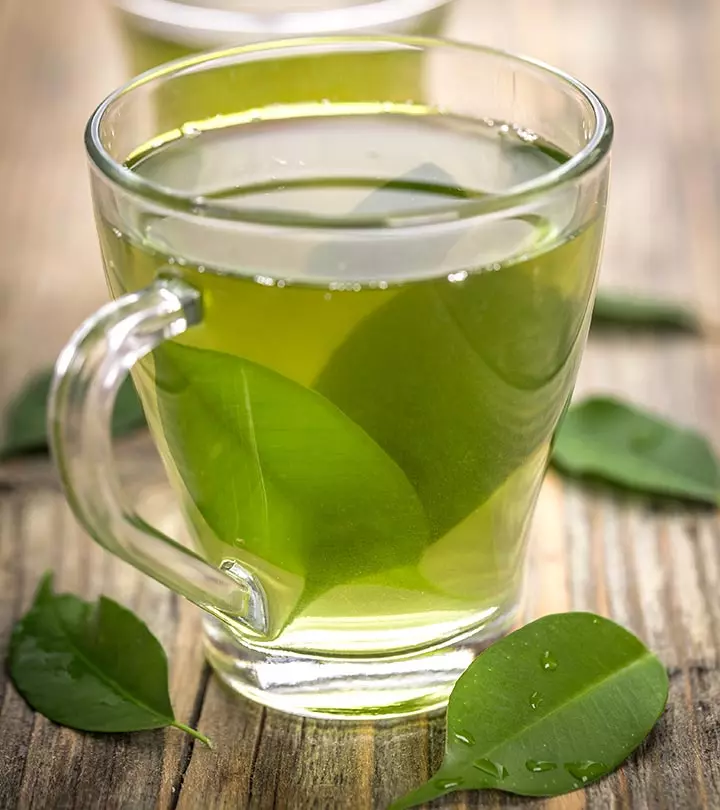
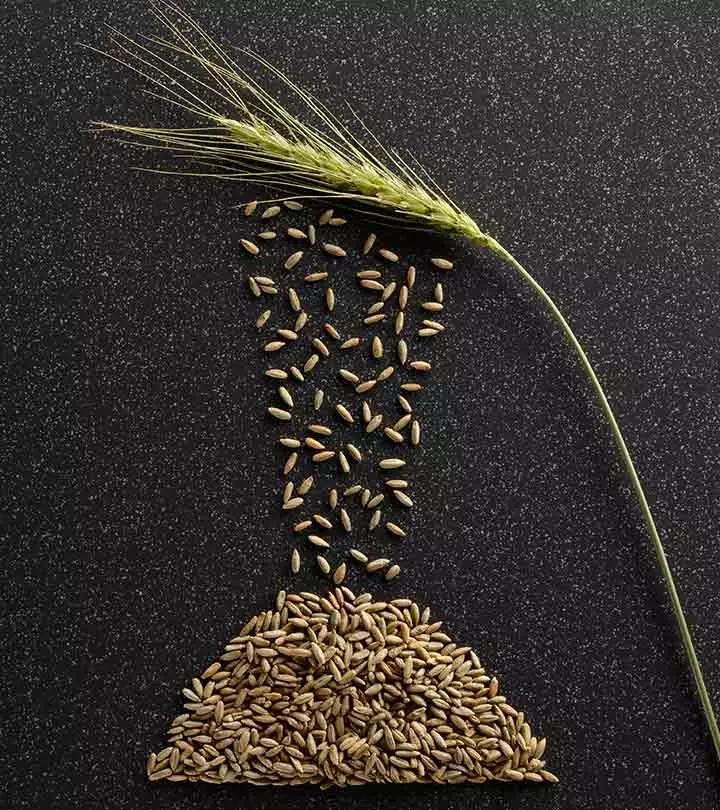





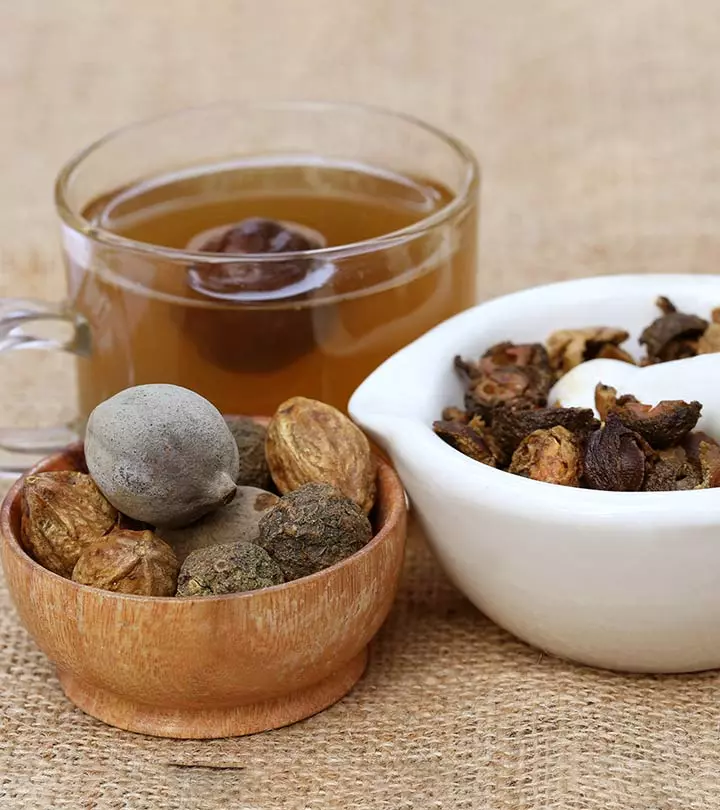
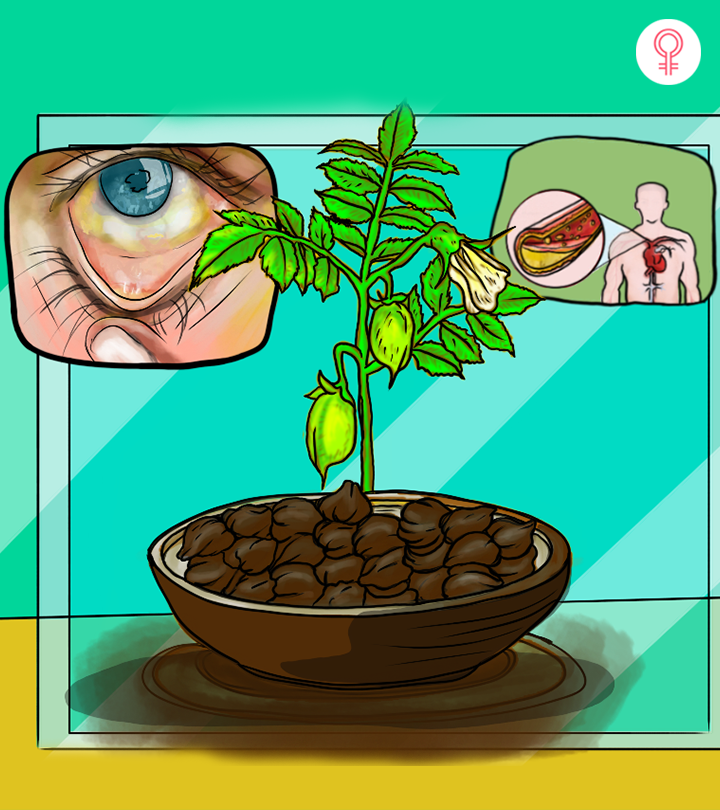
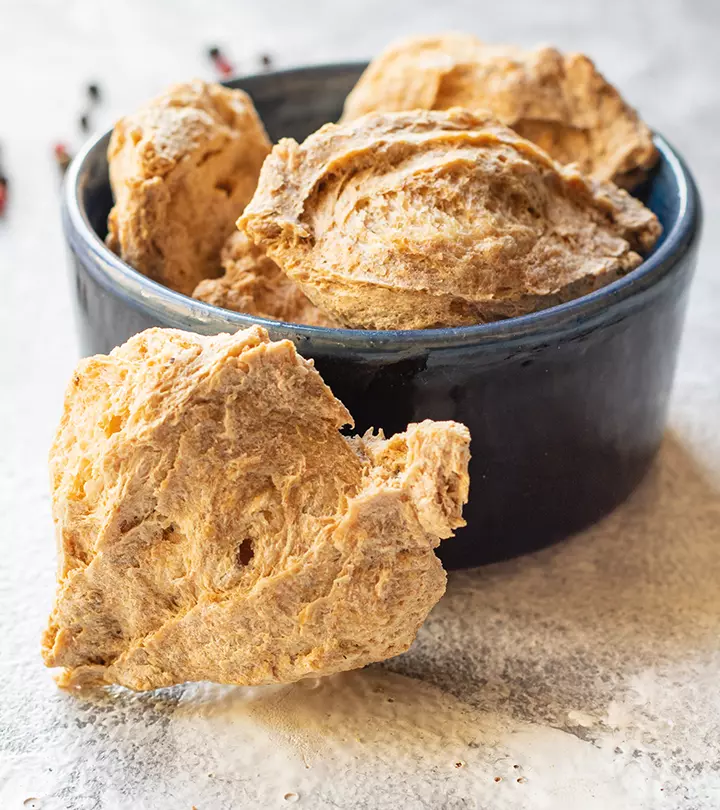

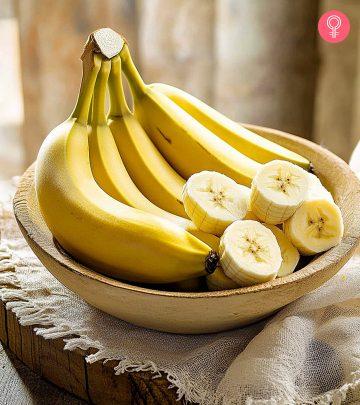
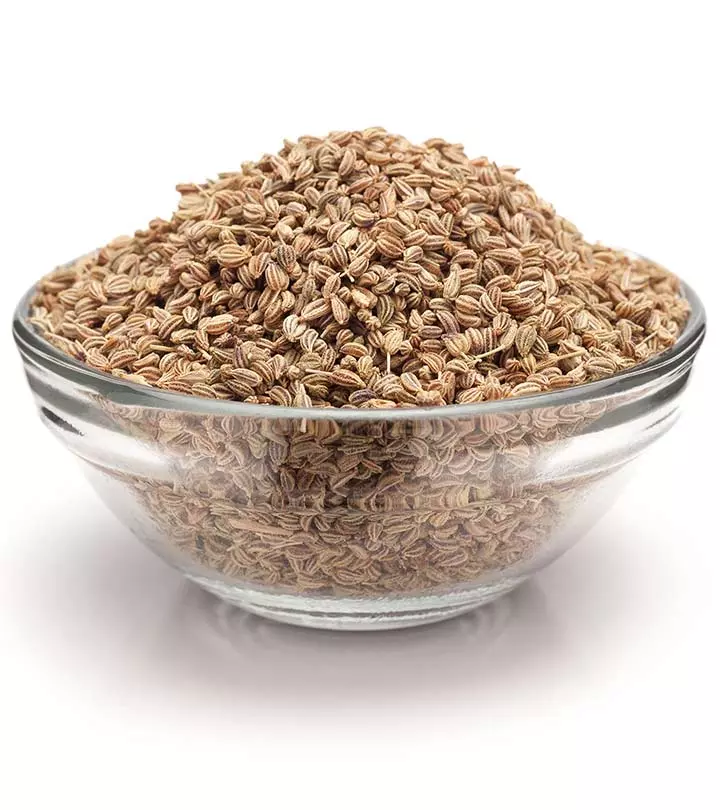
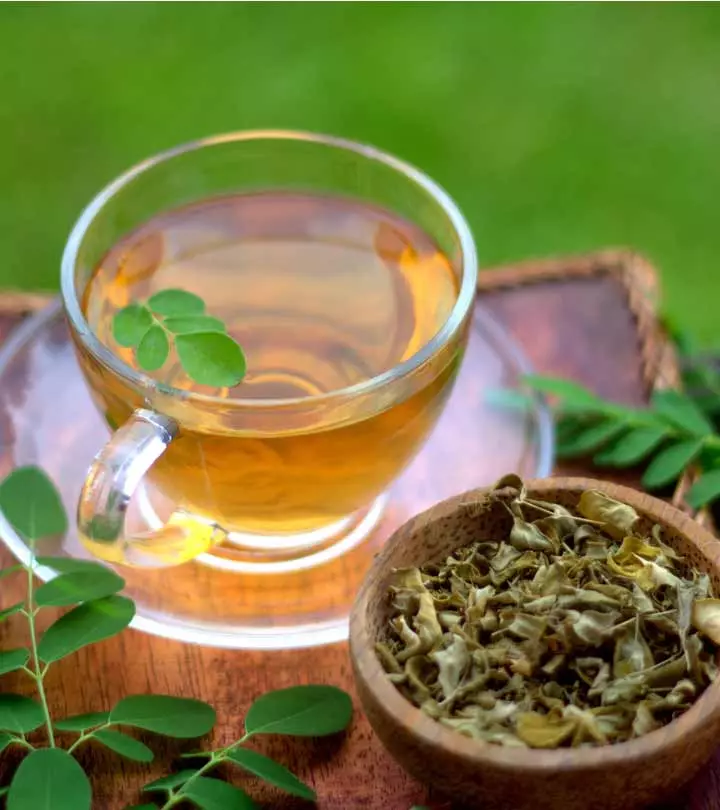
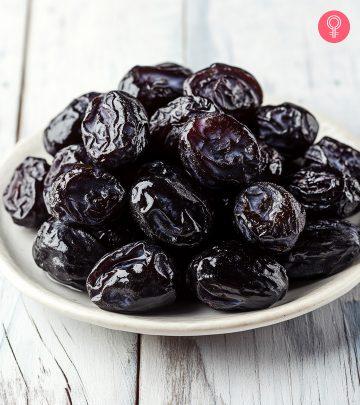
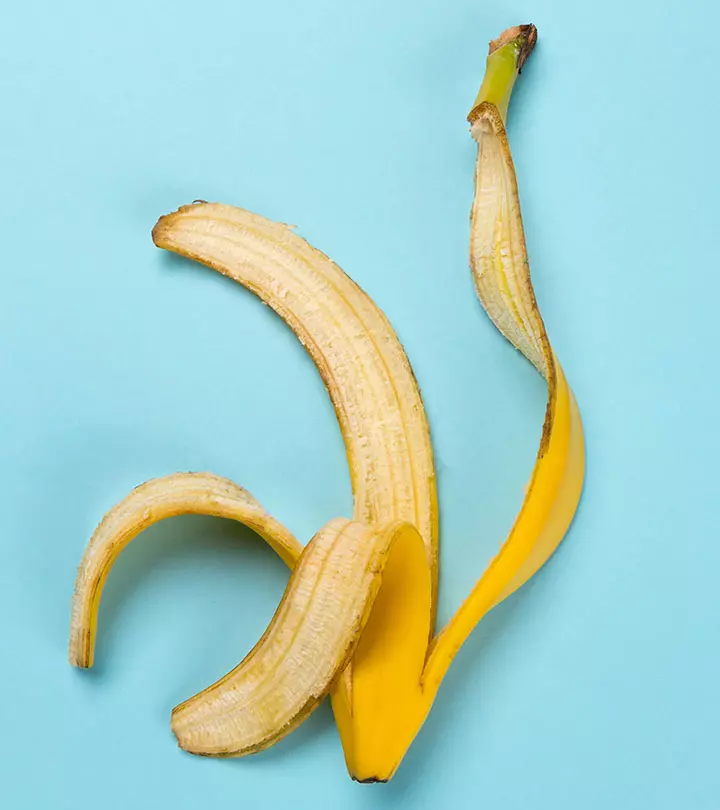
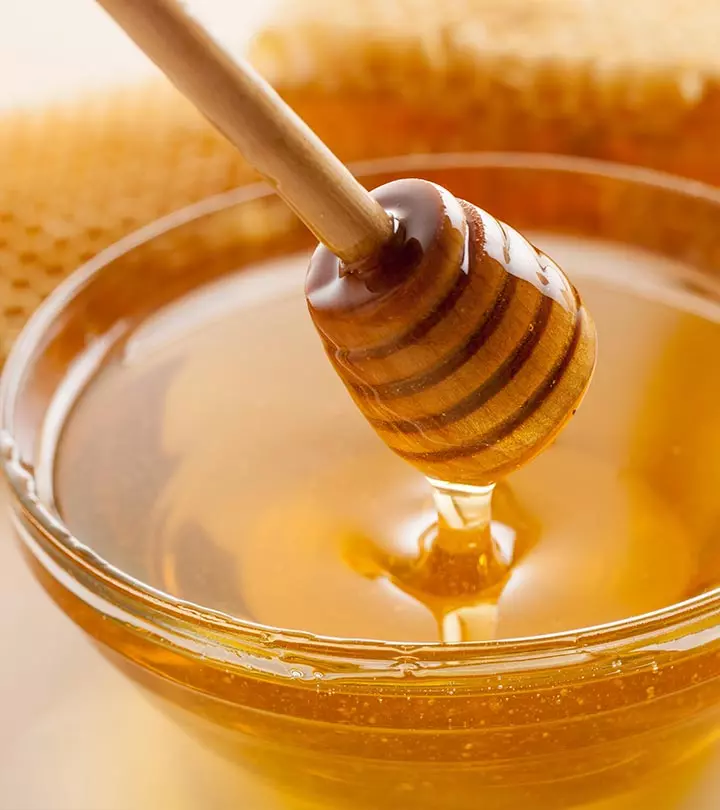

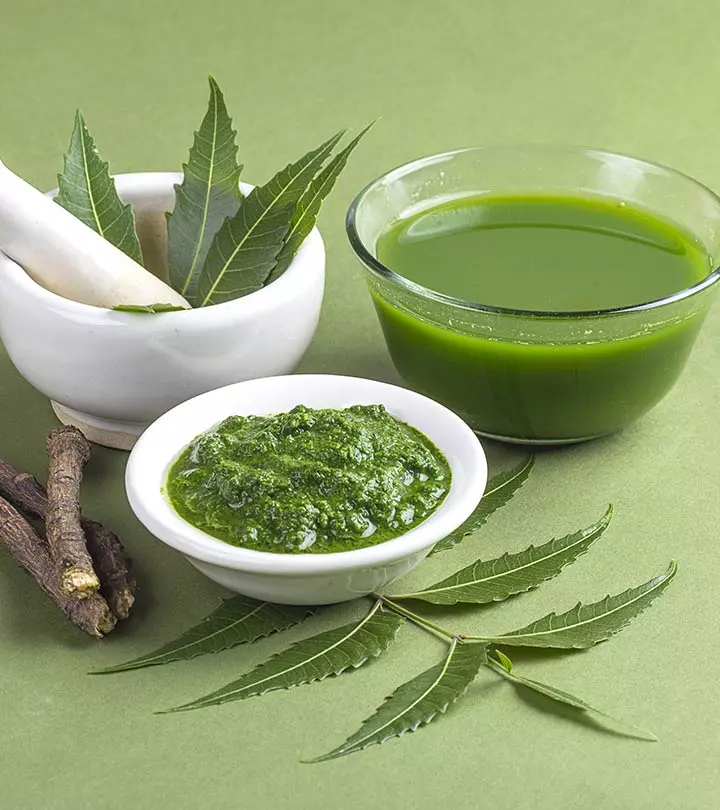

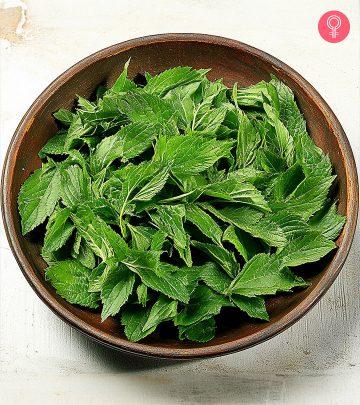
Community Experiences
Join the conversation and become a part of our empowering community! Share your stories, experiences, and insights to connect with other beauty, lifestyle, and health enthusiasts.